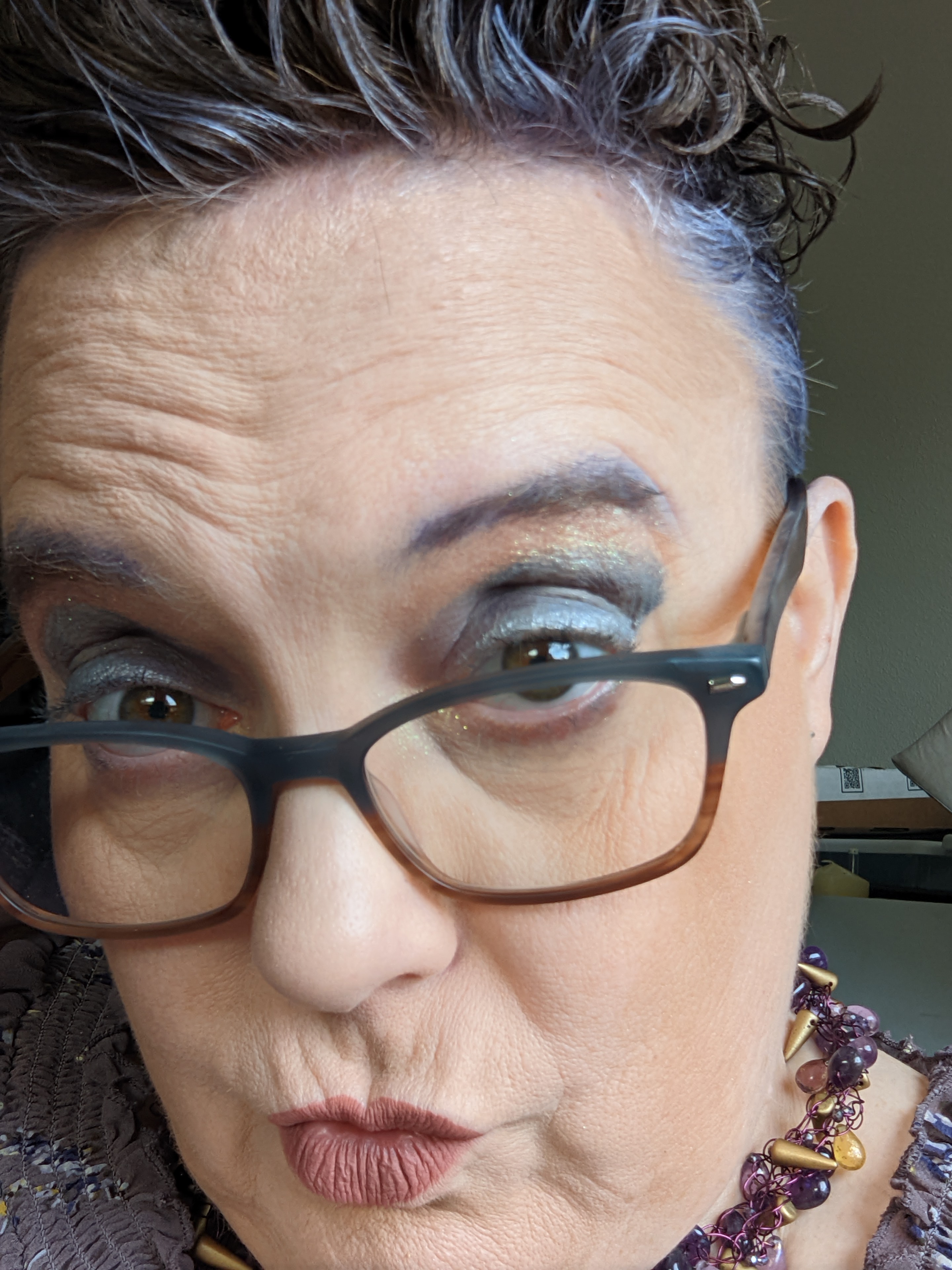Your cart is currently empty!

Just Be Yourself
I don’t remember how old I was when I realized I didn’t have a clear sense of my own identity. I don’t know when people started telling me, “You’re trying too hard! Just be yourself.” What I do remember is the feeling of absolute frustration I felt at it all.
“What do they mean, ‘trying too hard’? They told me to do my best. How can I possibly be doing too much? I’m only trying to do my best. How does one ‘just be themselves’? How am I supposed to know who I am?”
For me there was the dutiful, god-fearing woman my parents wanted me to be. The identity ordained by God Almighty himself. She was devout, meek and submissive. She loved Jesus, and clung to her rigid, narrow views. She was always dressed in modest, feminine apparel.
And then there was the person who I thought I needed to be in order to make friends in the normal world. This version of me reflected, as best as I could muster, my interpretation who I thought others wanted me to be. This version of me fluctuated depending on whose favor I was attempting to earn. She needed to earn good grades, but they couldn’t be perfect because she wasn’t a goody-goody-two-shoes; and she could never be too bad because she couldn’t have it getting back to her parents.
Somewhere in junior high, I found my inner Ren MacCormack from Footloose. He was bold and defiant; questioned God, the church and our parents. He was known to refer to the leaders of the evangelical church as the Sadducees and Pharisees; and held to the belief that the early Christian church and Marxism had more in common than difference.
The work of British psychoanalyst, Dr. Donald Winnicott, proposes that we each have a false and a real self. Our real self allows us to respond spontaneously, in the moment, to our needs, wants and the environment around us. It is fostered by having caregivers who adequately respond to us as babies. A healthy false self allows us to comply when it is necessary for the situation. (You really don’t want to act like a ‘Karen’ every time your order’s wrong.)
Our real self is vulnerable and grounded in our connections with others. Hopefully, when we are infants, our parents are “good enough” and are able to successfully meet our needs most of the time. If that happens, we will have a solid sense of self as we mature.
As I follow my own journey from living disconnected from my real self to allowing my self expression to flow spontaneously, reading about Dr. Winnicott’s theory has helped me understand the healing that has been taking place.
When our needs aren’t met consistently, we learn they are not valid or acceptable. We start to alter our behavior to please our parents, hoping to become less inadequate and re-engage with them in a meaningful way. Children growing up in these circumstances become disconnected with their true self and often grow into adults who are people pleasers. They may struggle to feel worthy and authentic as their achievements tend to be attributed to their false self. They try to minimize any future inadequacies by being hyper-independent and perfectionist.
Reconnecting with our real self requires us to get in touch with our feelings, our needs and our desires. We reconnect with our real self by sharing our feelings, needs and desires with others and having them met and validated creating a sense of connectedness. Essentially, I am me when there is a we.
For me, it started with chasing moments where I felt this intense connection to the world around me when my world was at its darkest. These were snapshots in time where my essence was simultaneously separate from and a part of all that was around me. I started reaching out to others and acknowledging I needed them to share their light with me.
It grew to learning to stay put in whatever emotional state I found myself and letting it be and exist without forcing it to change in order to be more palatable. It has been about allowing those moments to be rather than focusing on controlling the outcome. The more I could feel what was going on inside my being, the more clarity I gained into what I liked or didn’t like; and what I needed to be happy and successful. The more I allowed moments and emotional states to just be and started exploring them with curiosity; the less I needed to control the outcome, and the more I could just ride the waves of life without drowning in self-doubt.
Now, I’m learning to express all of that new sense of self without overly censoring myself. I have spent half a century performing complicated social-emotional calculus in order to determine who to be when, and I am only just now figuring out that it really is as easy as just being yourself.
Sources
https://depthcounseling.org/blog/winnicott-true-false-self
Leave a Reply